
At our clinic in Singen am Hohentwiel, we offer Invisalign and SureSmile clear aligners – two modern and different systems, which are clinically guided alternatives to traditional braces - so you can make an informed, independend choice. Both systems are real orthodontics and rely on advanced digital technology to provide effective, discreet, and customized treatment for children and teens. Dr. Jaroch is certified in Invisalign and in SureSmile protocols, ensuring that each patient receives individually tailored care in a supportive and professional setting.

1. Aesthetics
The clear aligners are virtually invisible – perfect for children who feel self-conscious about wearing traditional metal braces. This can greatly boost their confidence, especially at school or during sports activities.
2. Comfort
No metal components mean no discomfort from brackets or wires. Invisalign aligners are smooth and gentle, significantly reducing pressure points and irritation inside the mouth.
3. Hygiene
Since the aligners can be taken out for eating and brushing, maintaining good oral hygiene is much easier. This helps prevent cavities and gum issues – particularly important for younger children still developing proper brushing habits.
4. Flexibility in Everyday Life
Whether it’s football, dancing, playing an instrument, or school photos – the aligners rarely get in the way. They can be removed briefly if needed and are hardly noticeable during everyday activities.
5. Fewer Dietary Restrictions
Children can enjoy their favorite foods without limitations, as the aligners are removed during meals – unlike with fixed braces, where certain foods must be avoided.
6. Predictable Results
With advanced 3D imaging technology, the entire treatment plan is precisely mapped out from the beginning – giving you a clear picture of what to expect at each stage.
7. Early Intervention – Invisalign First
Invisalign First is specially designed for children aged 6 to 10. It gently corrects developing bite issues early on – often preventing more complex treatments later. Learn more about Invisalign First
8. Fewer Emergencies – Less Stress for Parents
Studies show* that Invisalign is associated with up to 80% fewer emergency visits than traditional braces – no broken wires or loose brackets. This saves time and is especially convenient for families with busy schedules or who travel longer distances, such as from nearby regions in Switzerland.
For more information about Dr. Jaroch’s Invisalign certification in Germany and Switzerland, please visit the official Invisalign doctor locator.
Curious what your smile could look like after Invisalign treatment?
With the free Invisalign SmileView® tool, you can get a realistic simulation of your future smile in just seconds – using nothing more than a quick selfie from your smartphone!
Try it now:
Invisalign SmileView® Simulator
No registration. No app download. Just one photo – and a glimpse of your new smile.
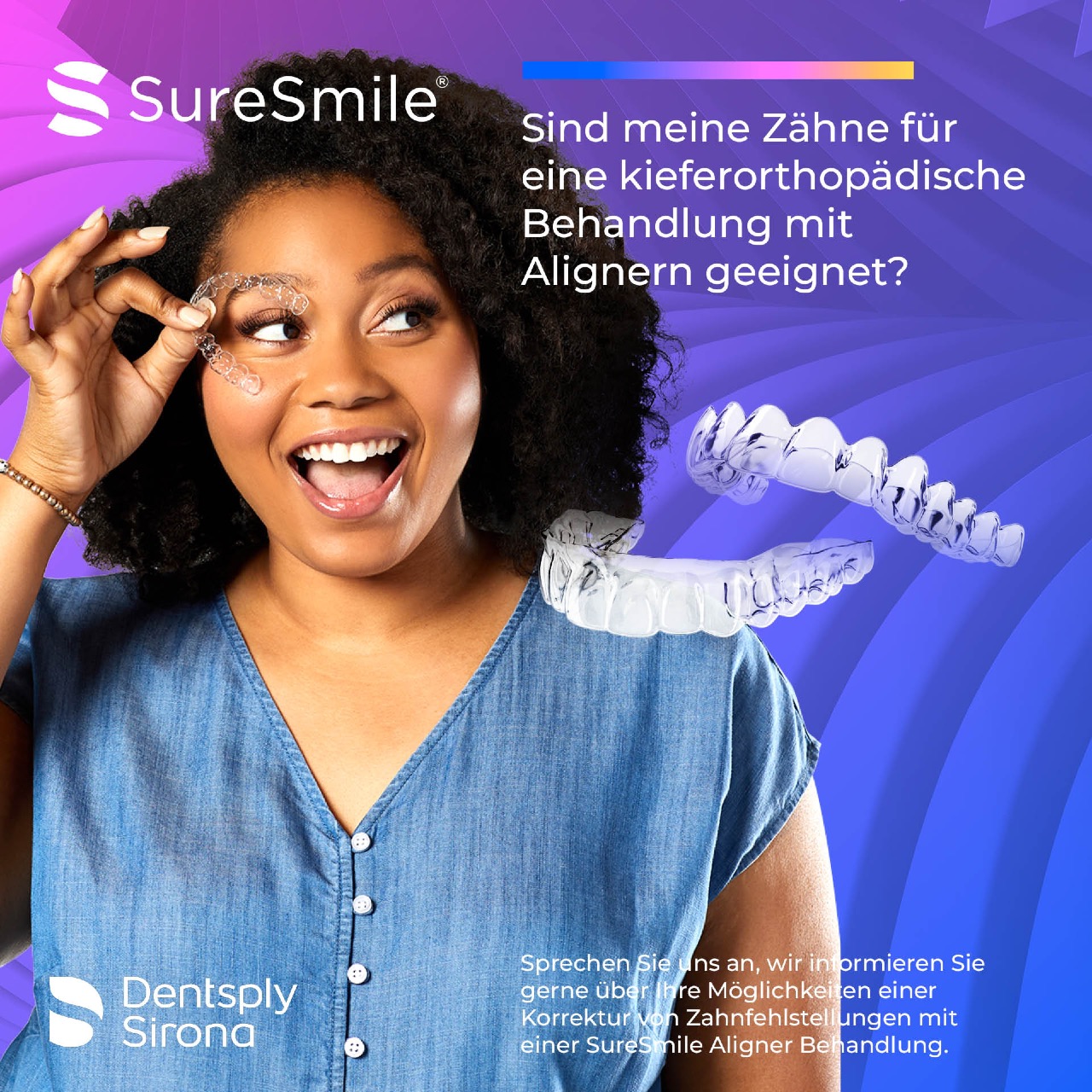
1. Aesthetics
SureSmile aligners are clear and barely noticeable – ideal for children and teens who are self-conscious about wearing traditional braces. This can greatly enhance their confidence during school, sports, or social activities.
2. Comfort
SureSmile aligners are custom-made to fit comfortably over the teeth, eliminating the discomfort caused by metal wires or brackets. The smooth material reduces irritation and helps children adapt quickly to wearing them.
3. Oral Hygiene
Because the aligners are removable, children can brush and floss normally – which supports better dental hygiene and helps prevent cavities and gum issues, especially in younger patients still developing consistent brushing routines.
4. Everyday Flexibility
From soccer and dance to school events and musical instruments – SureSmile aligners can be taken out briefly when needed and don’t interfere with most daily activities. Their near invisibility also allows children to feel more confident in social settings.
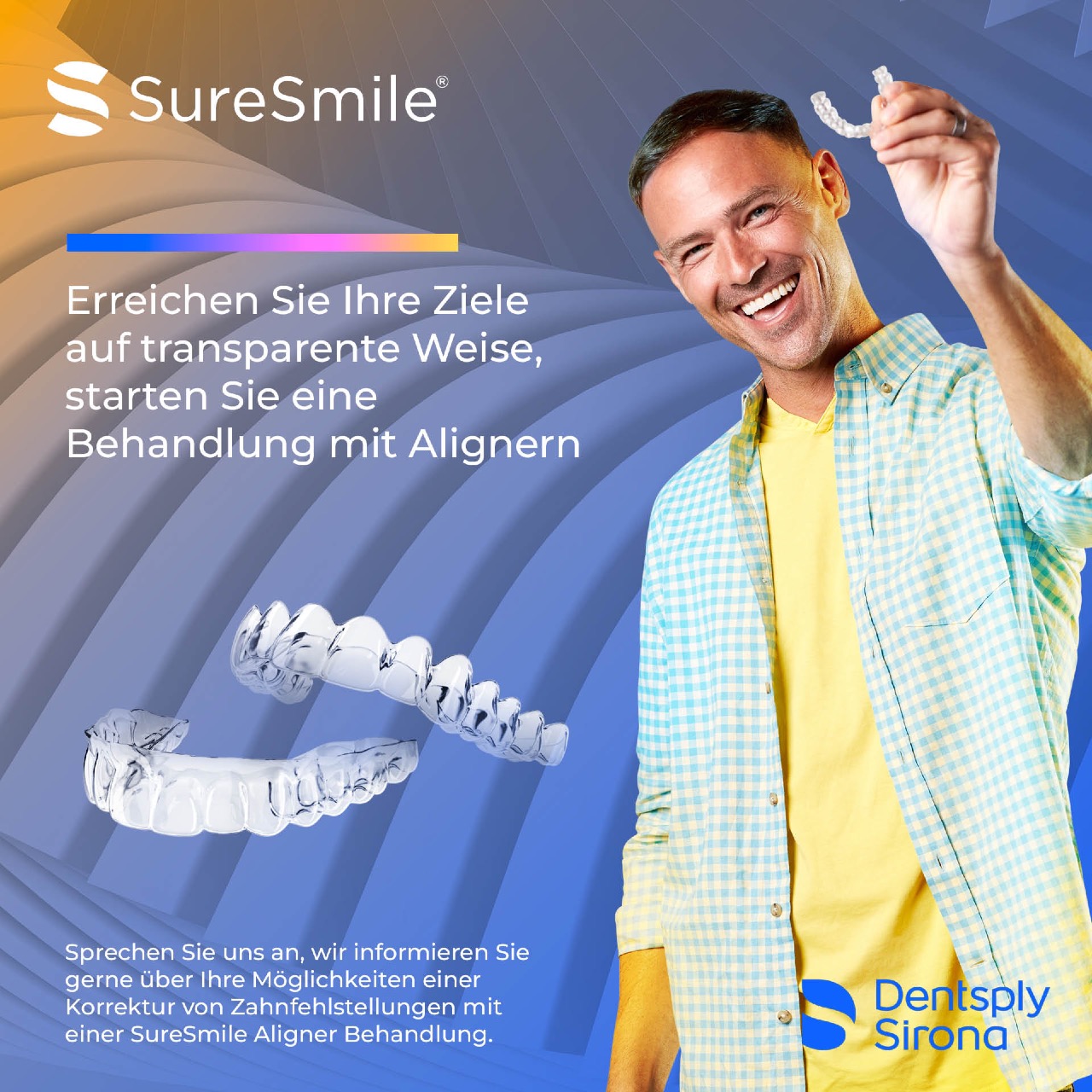
5. No Food Restrictions
SureSmile wearers can enjoy all their favorite foods – crunchy, sticky, or chewy – since aligners are removed during meals. There are no dietary limitations as with fixed braces.
6. Precise Predictable Treatment
SureSmile uses advanced 3D scanning and digital treatment planning, which allows for highly accurate and predictable tooth movement from start to finish. The software simulates the full treatment process before the first aligner is even made.
7. Fewer In-Office Adjustments
Thanks to its precise digital workflow, SureSmile treatments typically require fewer refinements and in-office visits than many other aligner systems – making it convenient for families with busy schedules or long travel distances.
8. Age-Appropriate Treatment Options
While SureSmile does not have a specific “First” product like Invisalign, it supports early interceptive treatment through careful planning for children in mixed dentition stages. Our team creates child-specific treatment plans using the SureSmile platform, supporting early correction where needed.
For families from Singen and the surrounding Swiss border region, Invisalign and SureSmile is an excellent choice for gentle, modern orthodontic care. Swiss patients, in particular, appreciate the fewer required in-office visits compared to fixed braces – making it easier to integrate treatment into daily life.

A child’s dental structure is constantly changing. Jaw growth, tooth eruption, and individual development make treatment planning with fixed appliances complex and often time-consuming.
Wires, brackets, and frequent adjustments can cause pain, pressure sores, and irritation in the mouth – making the treatment experience uncomfortable for many children.
Traditional braces require frequent check-ups, are difficult to clean, and increase the risk of cavities and gum inflammation – especially in younger patients who are still learning proper brushing techniques.
Metal braces are often seen by children and teens as awkward or embarrassing – especially at school, while speaking, or during social activities.
Aligners are not only discreet and aesthetically pleasing, but they also offer many practical benefits for children and teens: they are removable, comfortable, and associated with up to 80% fewer emergency visits compared to traditional metal braces* – a major advantage for active kids and busy families. School, sports, and social activities remain largely unaffected, and the removable trays make oral hygiene easier and more effective.
If you’re looking for modern, child-friendly orthodontic care in the Singen, Hegau region, or near the Swiss border – whether from Zurich, Winterthur, Schaffhausen, or the Canton of Thurgau – we’d be happy to advise you and your child in person. Let us guide you toward a healthy bite and a confident smile – step by step.

NO! And that’s one of the most important differences. Choosing the right aligner system is absolutely critical for a safe and effective orthodontic treatment.
A proper aligner is one that is prescribed and monitored by a dentist or orthodontist specialized in tooth and jaw correction. Unfortunately, the internet is flooded with a growing number of aligner providers. But here’s what many people don’t know: Most of them are not real orthodontic devices.
Many of these companies offer cosmetic aligners – not true braces. They may look similar, but they’re not designed to treat complex dental or jaw issues and are not supervised by trained professionals. In fact, several countries – including the USA and Austria – have taken legal action against such business models.
In 2023, the largest U.S. provider of cosmetic mail-order aligners, SmileDirectClub, was sued multiple times and ultimately filed for bankruptcy. The company had marketed itself similarly to Invisalign but operated independently – offering lower prices and no in-person consultations.
Many customers later realized they were not actually using Invisalign, as they had assumed. Unfortunately, this confusion is still not uncommon.
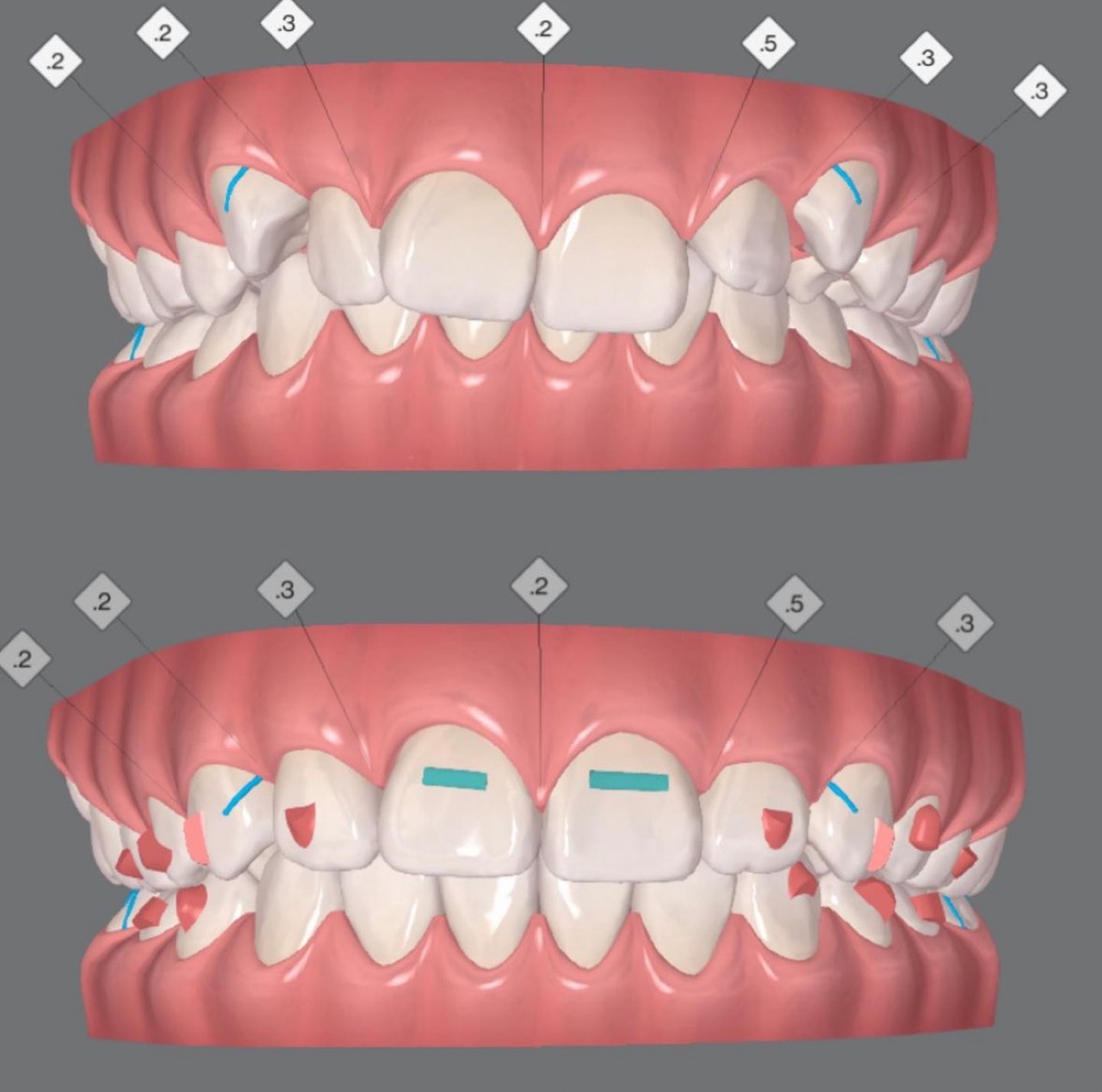
True orthodontic aligners can only be offered by licensed dentists! But be cautious: some online providers legally rent space in dental offices, making it appear as though you are receiving legitimate braces. This practice is still legal in Germany, though Austria has already banned it. How is a patient supposed to know the difference?
In our Singen-based dental clinic, patients receive verified Invisalign or SureSmile treatments - not cosmetic shortcuts.
Don’t decide based on price alone, and don’t be swayed by low monthly payments! Braces are expensive because the treatment is lengthy. The technology behind a true aligner involves numerous patents and state-of-the-art technology—none of which comes cheap. Check the qualifications of the dentist offering the treatment. As an Invisalign ans SureSmile expert in Singen, Dr. Jaroch provides transparent advice and realistic treatment timelines for every patient.
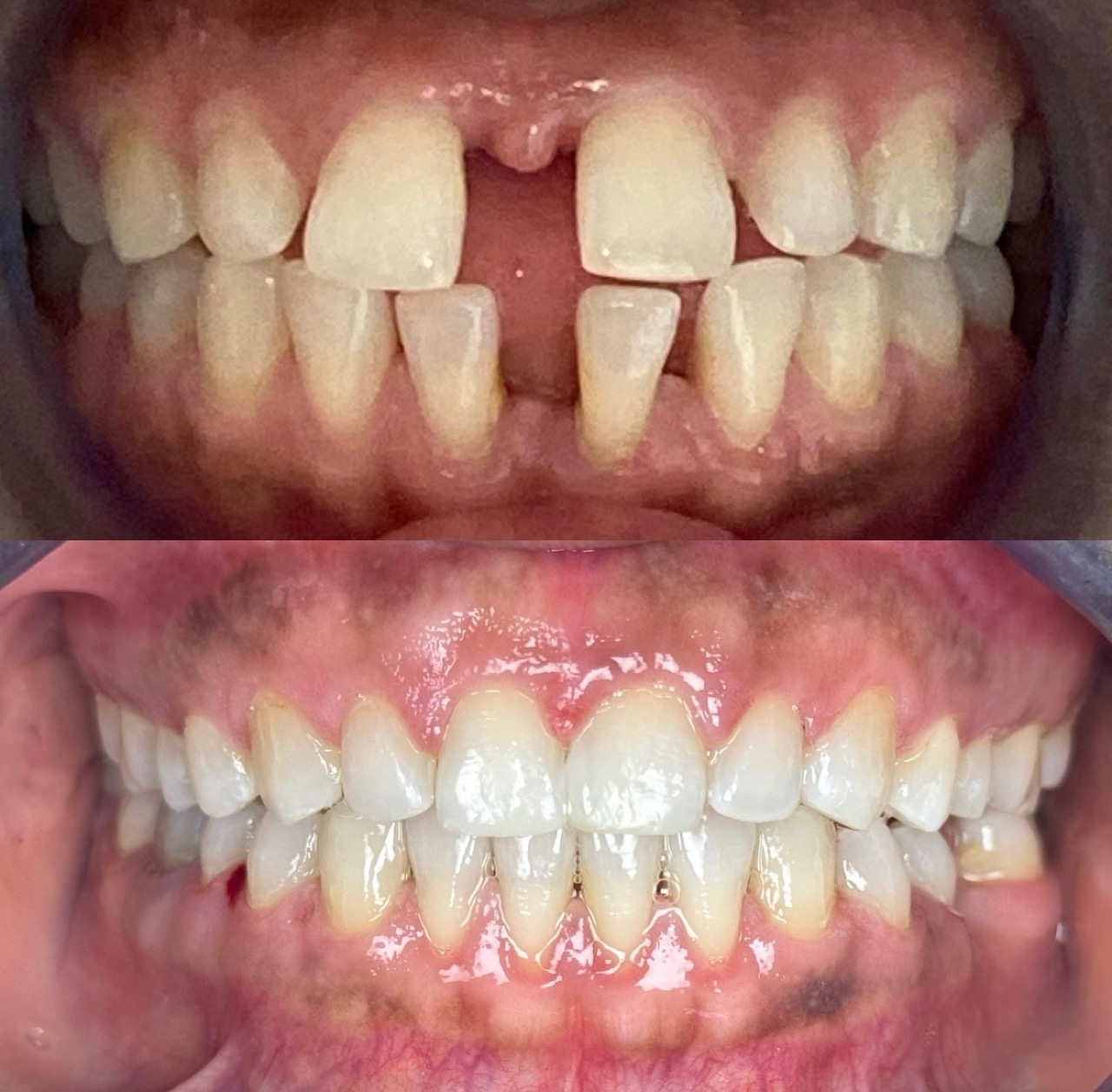
Many cosmetic aligner providers promise short treatment times of 10-16 weeks. This is medically unrealistic! Even minor misalignments typically cannot be corrected with true aligners in less than 30 weeks—and this is for mild cases. More complex cases can easily take up to two years.
No! Invisalign/SureSmile treatment may only be provided by qualified dental professionals who are clinically certified by Invisalign. Becoming an Invisalign or SureSmile provider involves a structured certification process that includes:
Participation in the official "Become an Invisalign Provider" or "Become an SureSmile Provider"training program
Access to clinical tools, ongoing support, and the latest advancements:
Invisalign: including SmartTrack™ material, SmartForce™ attachments, and 3D treatment planning
SureSmile: including digital 3D scanning, AI-driven treatment simulation, and precision-crafted aligners using advanced Essix® material.
Continuing education through Invisalign/SureSmile training sessions and DACH summits (Germany, Austria, Switzerland)
Because of these strict requirements, some dentists choose to offer in-house, self-made aligners instead. However, the difference in quality and treatment precision is often easy to spot – even without a dental background.
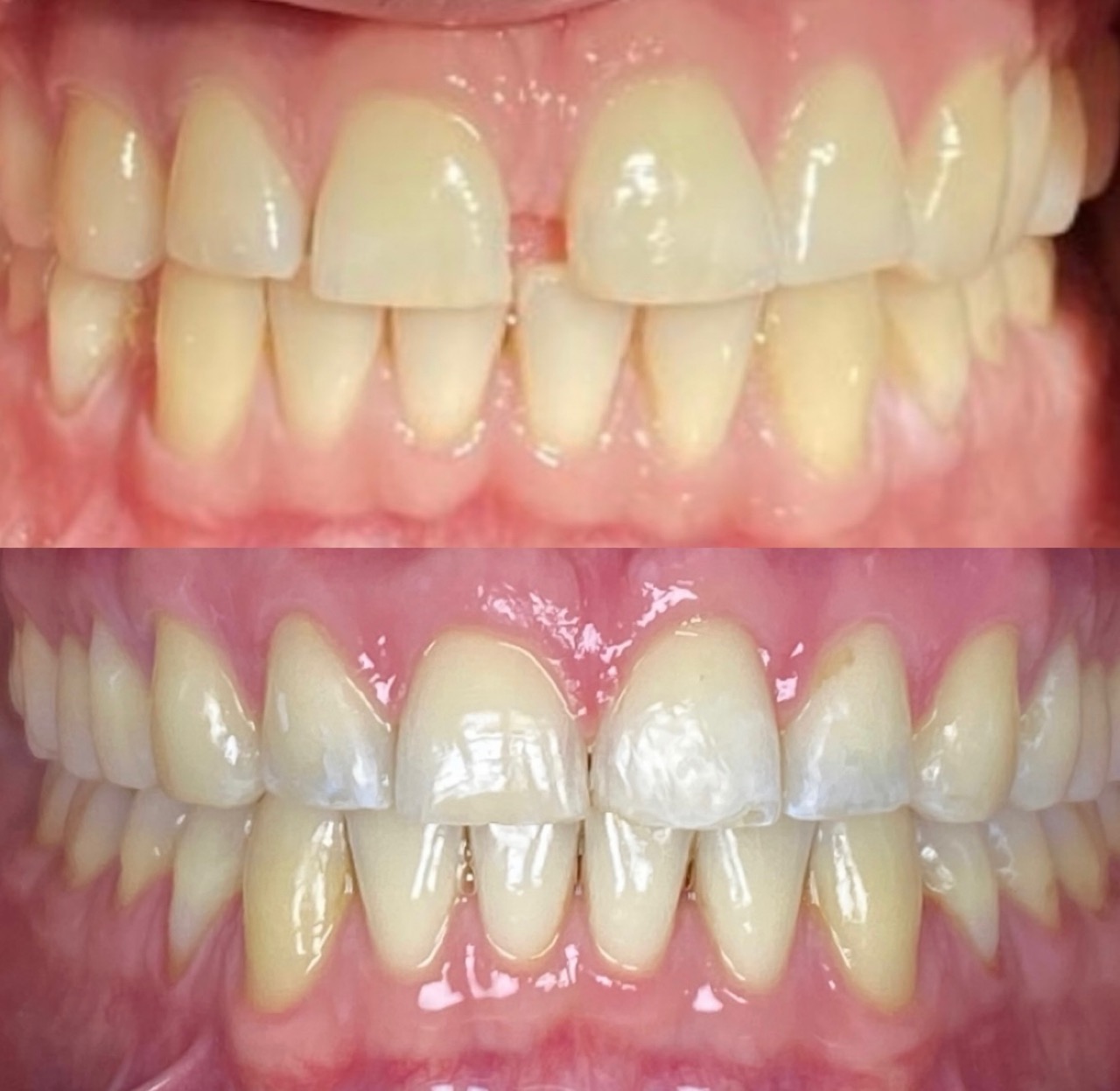
Technically – yes. Many dentists do it. It saves a lot of money, eliminates lab fees owed to Invisalign, and often increases profits. But here’s the catch:
What you save in cost, you sacrifice in precision. Invisalign holds multiple patents on tooth movement techniques and material technology that are simply not replicable with in-house or DIY aligner systems.
More and more online providers are promoting low-cost clear aligners delivered directly to your door – with no in-person dental visits. These so-called DIY aligners may seem convenient and affordable, but they carry serious health risks. What seems cheap today could become very expensive tomorrow.
Most DIY providers skip essential diagnostics such as x-rays or 3D scans. This means cavities, gum issues, or jaw misalignments can go undetected – leading to long-term damage.
Tooth movement must be carefully planned and monitored. Without a dental professional’s oversight, you risk damaging the roots, loosening teeth, or causing bite misalignments that are difficult to correct later.
If something goes wrong – pain, uncertainty, poor fit – you’re left with email support or a call center. There’s no clinical exam, no customized solution, and most adjustments come at an extra cost, if at all.
Unlike Invisalign’s patented SmartTrack™ material or SureSmile Essix™, many DIY aligners use standard plastics that are less precise, less durable, and often less comfortable to wear.
Once the treatment ends, your teeth need to be stabilized with a retainer to prevent shifting back. Many DIY systems don’t include long-term retention – or charge hidden fees for it.
Invisalign/SureSmile are more than a product – they are a full orthodontic treatment guided by certified professionals:
Your treatment cost is based on the severity of the misalignment, treatment length, and whether the case is simple or complex.
Invisalign/SureSmile includes:
Digital 3D scans
Optional x-rays
Personal consultation
Ongoing monitoring by a certified Invisalign provider
Final retention phase (to maintain your result)
This is far more than just a piece of plastic.
Many practices offer flexible financing – even with 0% down. Invisalign/SureSmile can often be partially reimbursed through private insurance or paid via tax-advantaged accounts (like FSA/HSA in the U.S.).
According to studies and official Invisalign sources, overall treatment costs are typically comparable to conventional metal or ceramic braces.
Use the Invisalign® Doctor Locator to find a certified provider near you and book a free consultation. This way, you'll receive a personalized treatment plan and cost estimate based on your specific needs.
In our clinic in Singen, we rely on Original Invisalign systems - no compromises - no shortcuts.
For more informations about Dr. Jaroch go to his Instagram-Site.
Read the reviews on Google
*Invisalign, the Invisalign logo, and iTero, as well as other designations, are trademarks or service marks of Align Technology, Inc. or its subsidiaries or affiliated companies, which may be registered in the United States and/or other countries.
Source: Global survey by Actionable Research, Align Technology, 2017 (N=898 Invisalign providers worldwide).